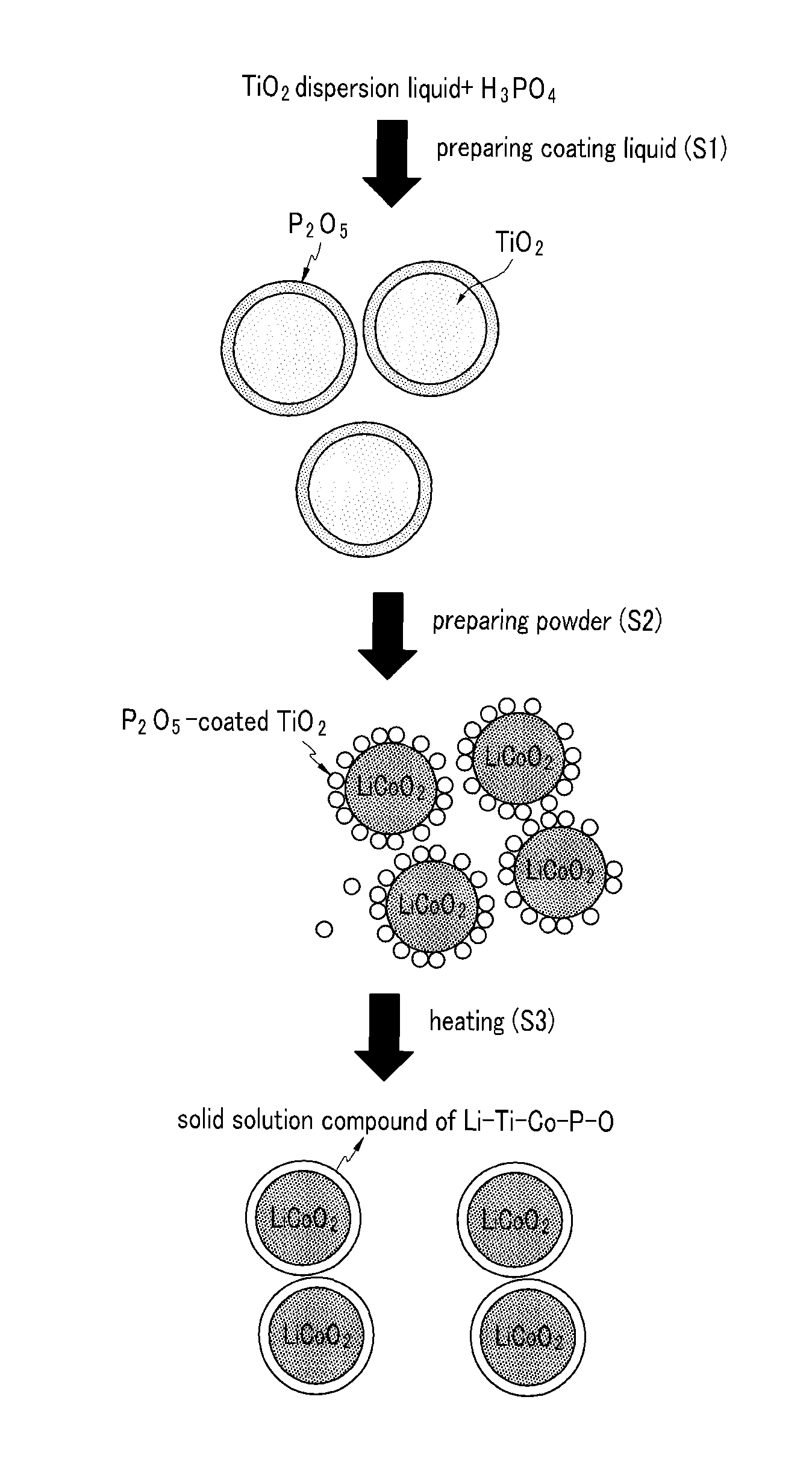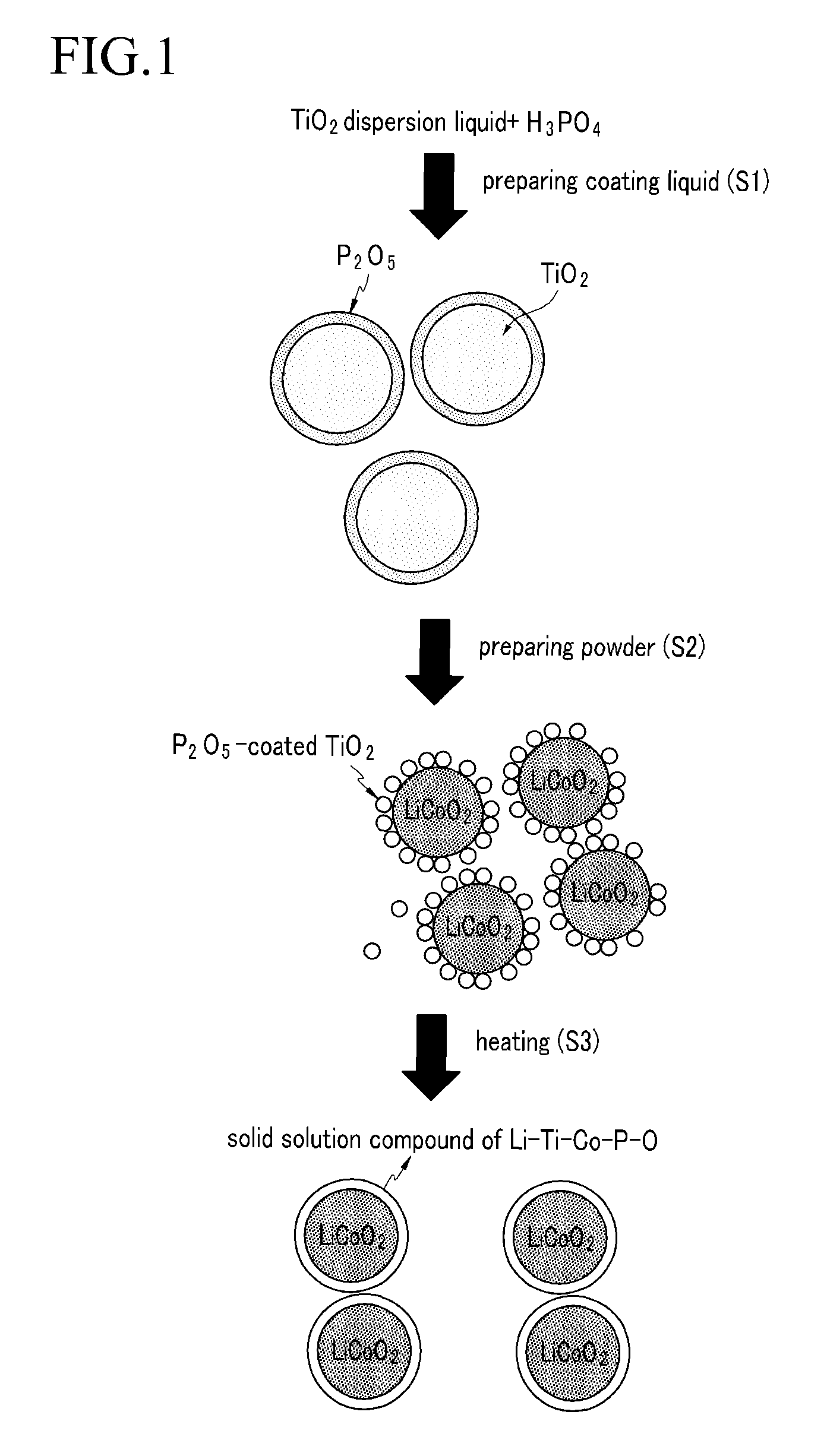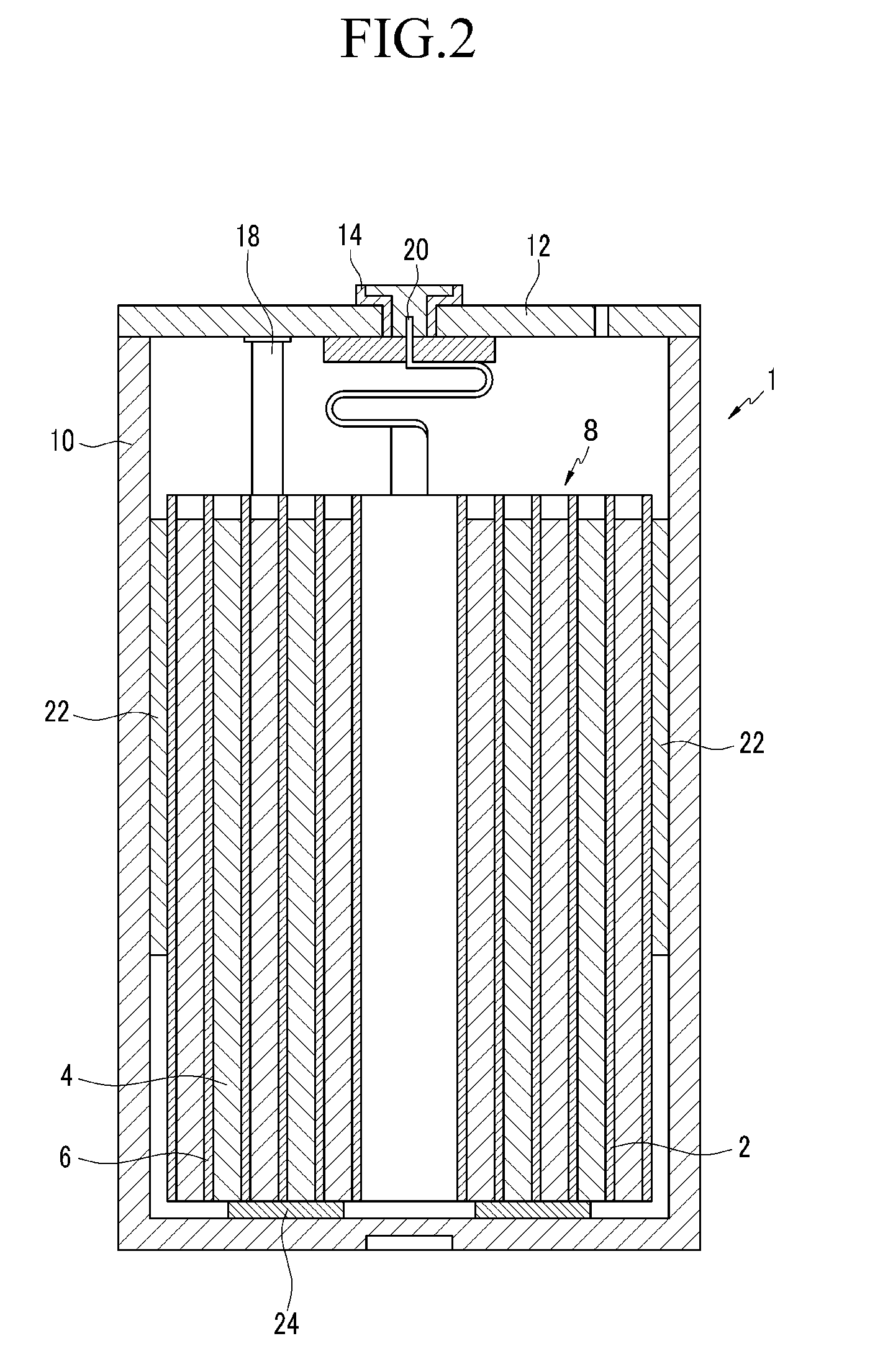Method for preparing cathode active material for lithium secondary battery
a lithium secondary battery and active material technology, applied in the direction of zirconium compounds, cell components, conductors, etc., can solve the problems of complex process, high cost, time consumption, etc., and achieve the effect of comparing process cost and simplified process
- Summary
- Abstract
- Description
- Claims
- Application Information
AI Technical Summary
Benefits of technology
Problems solved by technology
Method used
Image
Examples
example 1
[0055]50 g of TiO2 (average particle diameter of 100 nm, manufactured by Cosmo Chemical) was uniformly dispersed in 50 ml of ethanol solution and added with 0.1 g of a H3PO4 solution and agitated for 10 minutes to provide a coating liquid. The obtained coating liquid was dried at a temperature of 100° C. for 10 hours to provide a powder of which P2O5 is coated on the surface of TiO2. 0.3 g of powder was added with 100 g of LiCoO2 (average particle diameter of 20 μm) and dry-agitated by a high-speed mixer and fired at a temperature of 1000° C. for 10 hours to provide a cathode active material of a Li—Ti—Co—P—O solid solution.
[0056]The obtained cathode active material was dispersed by passing ultrasonic waves therethrough, and then the obtained cathode active material was mixed with Solef 2010 (Belgium) and Super P carbon in a ratio of 95:2.5:2.5 to provide a slurry. The obtained slurry was coated on an aluminum foil to provide an electrode plate. While using the obtained electrode pl...
example 2
[0057]It was produced in accordance with the same procedure as in Example 1, except that the 0.5 g of powder of which P2O5 was coated on the surface of TiO2 was used.
example 3
[0058]It was produced in accordance with the same procedure as in Example 1, except that the 1 g of powder of which P2O5 was coated on the surface of TiO2 was used.
PUM
| Property | Measurement | Unit |
|---|---|---|
| particle diameter | aaaaa | aaaaa |
| temperature | aaaaa | aaaaa |
| particle diameter | aaaaa | aaaaa |
Abstract
Description
Claims
Application Information
 Login to View More
Login to View More - R&D
- Intellectual Property
- Life Sciences
- Materials
- Tech Scout
- Unparalleled Data Quality
- Higher Quality Content
- 60% Fewer Hallucinations
Browse by: Latest US Patents, China's latest patents, Technical Efficacy Thesaurus, Application Domain, Technology Topic, Popular Technical Reports.
© 2025 PatSnap. All rights reserved.Legal|Privacy policy|Modern Slavery Act Transparency Statement|Sitemap|About US| Contact US: help@patsnap.com



